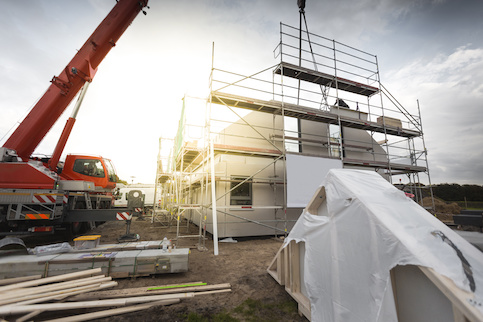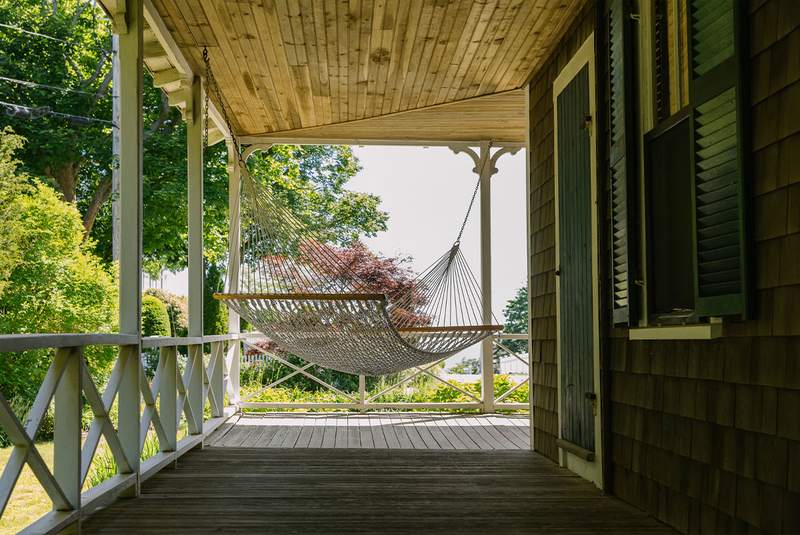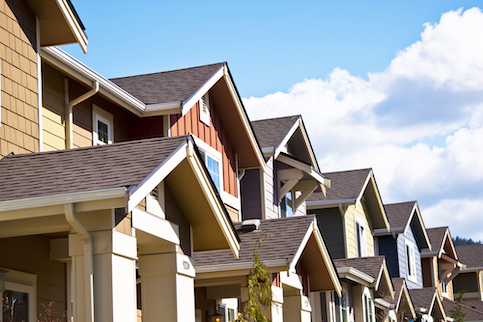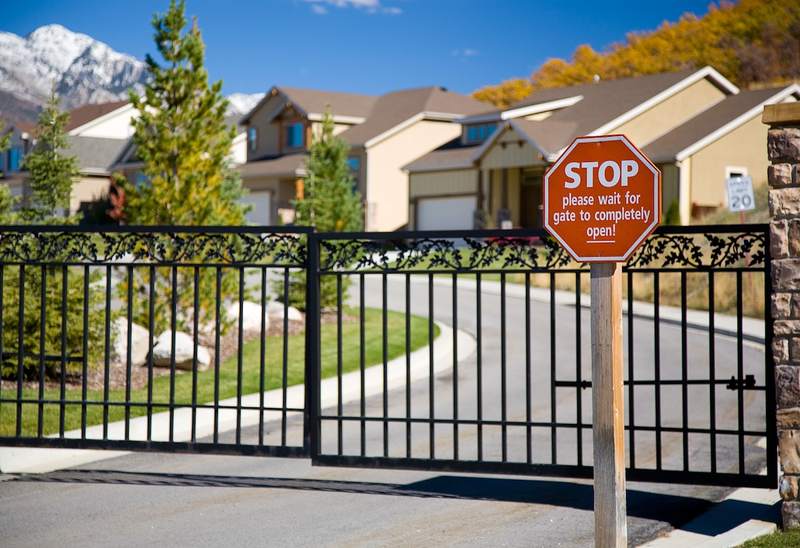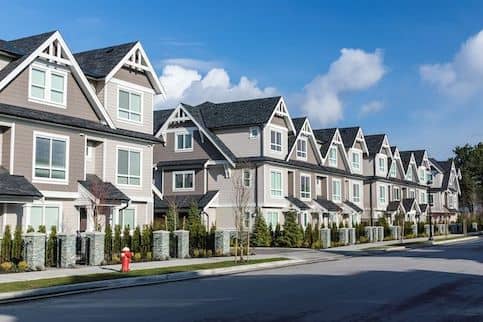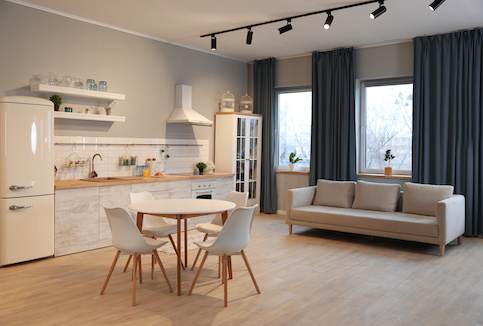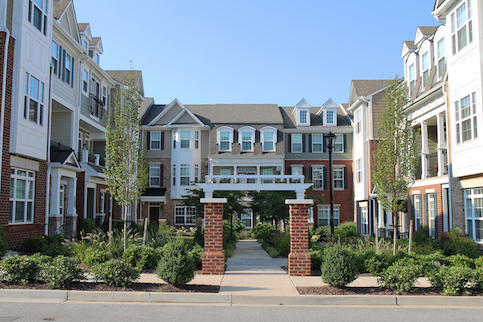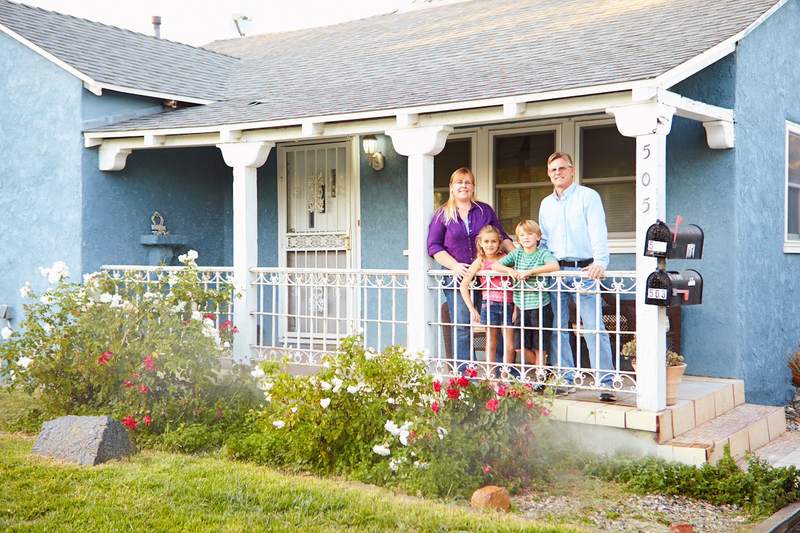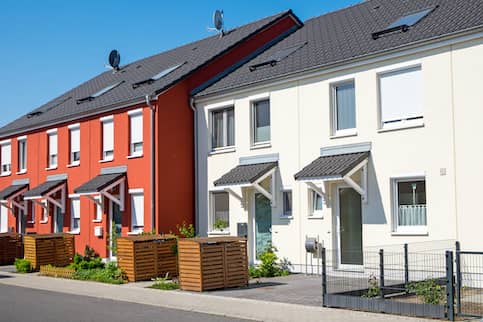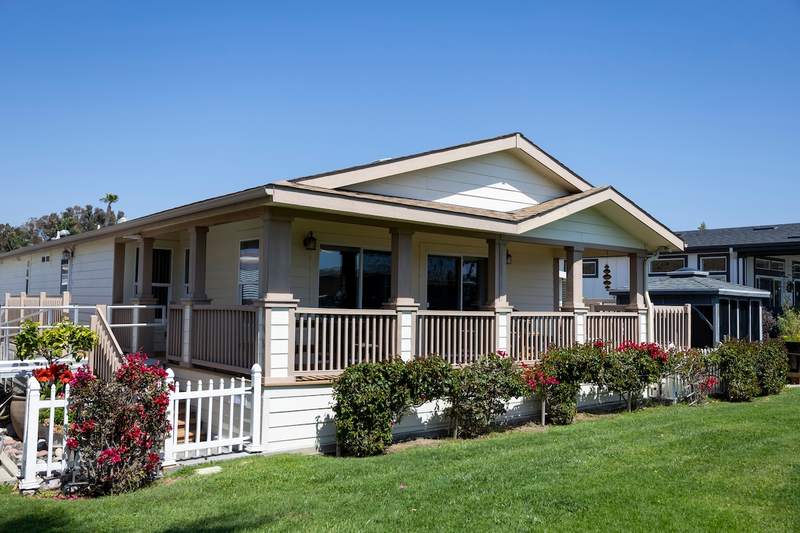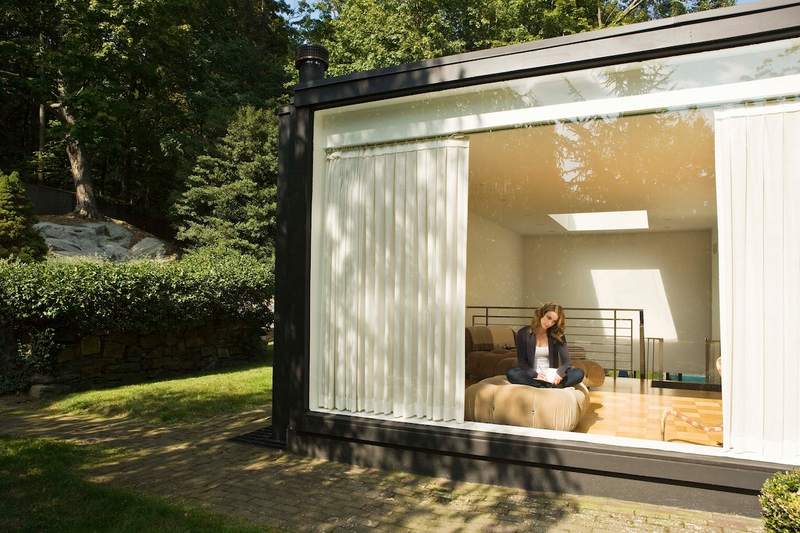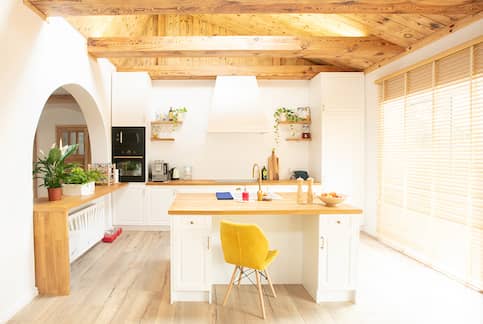Effective Nov. 16, 2025, both Fannie Mae and Freddie Mac no longer require a specific minimum credit score for conventional loan approval. Instead, loan decisions will be based on an analysis of overall credit risk factors.
Whether you’re constructing or buying a new modular home, have you decided how you’re going to pay for it? Modular homes are typically more affordable than traditional, onsite-built homes, and the application and financing processes are similar.
Modular homes can be a great, affordable housing option to explore. We’ll outline your options for modular home financing below.
What Is A Modular Home?
The primary difference between a modular home and a traditional home is construction. While traditional homes are built onsite, a modular home is built in sections in a factory.
Once the sections are completed, they’re shipped to the permanent home site. From there, a crew will assemble the modular home and attach it to a foundation.
Modular Homes Vs. Manufactured Homes
Modular homes are often confused with manufactured homes, but they aren’t the same. Like modular homes, manufactured homes are constructed in a factory. But manufactured homes – also known as mobile homes or trailers – are built on a steel chassis and then transported to the home site. Manufactured homes are also built to conform to Department of Housing and Urban Development (HUD) standards.
Modular homes are built in parts, and they’re assembled on a home site according to local building codes. They aren’t mobile. And once assembled, they’re secured to a permanent foundation.
Manufactured homes tend to depreciate in value if you don’t own the land underneath. However, the value of modular homes will vary with the market, much like traditional homes.
See What You Qualify For
Buy A Home
Discover mortgage options that fit your unique financial needs.

Refinance
Refinance your mortgage to have more money for what matters.
Tap Into Equity
Use your home’s equity and unlock cash to achieve your goals.
How Much Do Modular Homes Cost?
The cost of a modular home will depend on the floor plan, design and type of house. While customizations will drive up the price, you may spend less on a modular home than on a traditional home. The lower price point of modular homes is one reason they’re appealing to some hopeful homeowners.
The average modular home costs somewhere between $120,000 and $270,000 to build, deliver and assemble, according to HomeGuide. The average cost to build similar-sized traditional homes is between $155,000 and $416,000.
Keep in mind, the cost to build either type of home doesn’t include the cost of purchasing and preparing the land you put the home on. You can expect to pay $80 – $160 per square foot to construct a modular home, but you’ll also pay for site prep, foundation, delivery and construction.
Buyers typically have a wide range of mortgage options to pick from because most banks and lenders offer financing on modular homes.
Next, we’ll look at the most common modular home loans available.
Modular Home Financing Options
Before you start looking at potential homes to buy, you should take some time to think about how you’ll finance your new home. The type of modular home financing you choose will depend on your finances and situation.
Here are a few options to consider (we’ll discuss them in more detail below):
Modular Home Loans | Minimum Credit Score | Minimum Down Payment | Maximum Debt-To-Income Ratio |
|---|---|---|---|
Conventional loan | 620 | 3% | 43% – 50% |
FHA loan | 500 or 580 | 3.5% or 10% | 43% – 57% |
VA loan | 580 | 0% | Varies by lender |
USDA loan | 640 | 0% | 41% |
Construction loan | 620 | 20% | 45% |
Personal loan | mid-600s | 0% | 36% – 50% |
Chattel mortgage | 575 | 5% | Varies by lender |
Conventional Loan
A conventional loan is any home loan the federal government doesn’t directly back. Conventional loans usually fall into two categories: conforming and nonconforming. A conforming loan is a mortgage that can be purchased by Fannie Mae or Freddie Mac and that doesn’t exceed the Federal Housing Finance Agency’s loan limits.
Conventional loans are a popular option to purchase modular homes. You’re more likely to qualify for the best terms and interest rates with a good credit score. If you don’t make a 20% down payment with a conventional loan however, you’ll pay private mortgage insurance (PMI).
FHA Loan
You can also purchase a modular home with an FHA loan. The Federal Housing Administration backs FHA loans, making it easier for borrowers with lower credit scores or smaller down payments to qualify.
FHA loans are available for borrowers with a 500 credit score from some lenders, but you must make a 10% down payment. If your credit score is 580 or higher, you can qualify for an FHA loan with a 3.5% down payment. Also, your debt-to-income ratio (DTI) can’t exceed 43% – 57%. FHA loans have mortgage insurance premiums that are both upfront (due at closing) and monthly (usually last the life of the loan).
VA Loan
The Department of Veterans Affairs backs VA loans. The loans are available to qualified veterans, service members and their spouses. You can use a VA loan to buy a modular home and the land where you plan to construct the home.
VA loans don’t have a down payment requirement, and you don’t pay for PMI. However, there is a VA funding fee which ranges from 0.5% to 3.3% of your loan amount. Check with the VA to see if you meet the eligibility requirements.
USDA Loan
The U.S. Department of Agriculture insures USDA loans. The house must be located in a rural or suburban area, constructed after January 1, 2006, and have at least 400 square feet of usable living space to qualify for a loan.
USDA loans are a great option for first-time home buyers and low- to moderate-income borrowers. They don’t require a minimum down payment. Borrowers can finance the closing costs, and homeowners don’t pay private mortgage insurance. However, borrowers must pay a USDA loan guarantee fee.
Construction Loan
If you plan to build your modular home, you can apply for a construction loan. A construction loan is a short-term loan that covers the cost of building a house. Its funds are available while construction is happening.
Before a lender can approve a construction loan, you must submit detailed plans for the modular home’s construction. And your lender will need to approve the company responsible for building the home.
Personal Loan
Modular homes generally cost less than traditional homes, so you may be able to finance the purchase with a personal loan. Most personal loans are versatile financing options that can be used for almost any purpose, including buying a modular home. Most lenders offer personal loans up to $45,000. In rare cases, a lender may offer a personal loan for up to $100,000.
The benefit of getting a personal loan is that it’s unsecured, so you don’t have to put down any collateral. If you default on the loan, the bank can’t repossess your home or any other asset you may have used to secure the loan.
Applying for a personal loan is much easier than applying for a mortgage. But personal loans have higher interest rates and shorter repayment terms, so you’ll pay more in interest over the life of the loan and have higher monthly payments. Plus, there is no way to deduct interest from a personal loan from income taxes.
Chattel Mortgage
You can use a chattel mortgage on a semi-permanent or mobile structure, like a manufactured house. And you can finance the purchase and construction of a permanent building, such as a modular home, with a chattel mortgage.
Chattel loans can be used for a variety of purposes. But they have shorter repayment terms, limited loan amounts and higher interest rates. Chattel mortgages are secured by personal property, and modular homes are considered personal property. If a borrower defaults on the loan, a lender can take possession of the home.
How To Finance A Modular Home
If you’re ready to start your modular home purchase, use the following steps to complete the process:
- Prepare your finances: Review your finances and set a budget before purchasing a modular house. Use this opportunity to check your credit report. Knowing this information will help you choose a mortgage you have a good chance of qualifying for.
- Find a location: Before building your new home, decide its location. Make sure the zoning for the parcel allows for modular home construction.
- Decide on a modular home design: With your location chosen, you can start shopping for your home. Manufacturers typically offer a wide range of styles and sizes to choose from.
- Apply for financing: Shop around for a lender and choose the type of financing you want. Compare lenders and mortgage options to help ensure you pick the best one for your needs.
- Complete the purchase: You and your lender will finalize your loan paperwork after you receive final approval. Then you can prepare the land and start the building process.
The Bottom Line
If you’re wondering how much a modular home costs, the good news is that they’re generally more affordable than traditional houses. And there are many different modular home financing options to choose from.
Find A Mortgage Today and Lock In Your Rate!
Get matched with a lender that will work for your financial situation.

Jamie Johnson
Jamie Johnson is a Kansas City-based freelance writer who writes about a variety of personal finance topics, including loans, building credit, and paying down debt. She currently writes for clients like the U.S. Chamber of Commerce, Business Insider and Bankrate.
